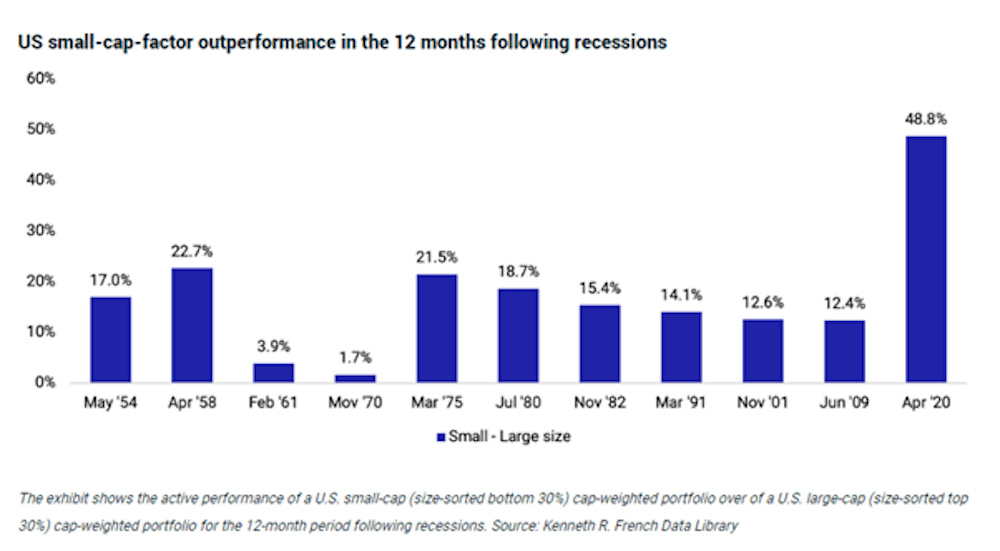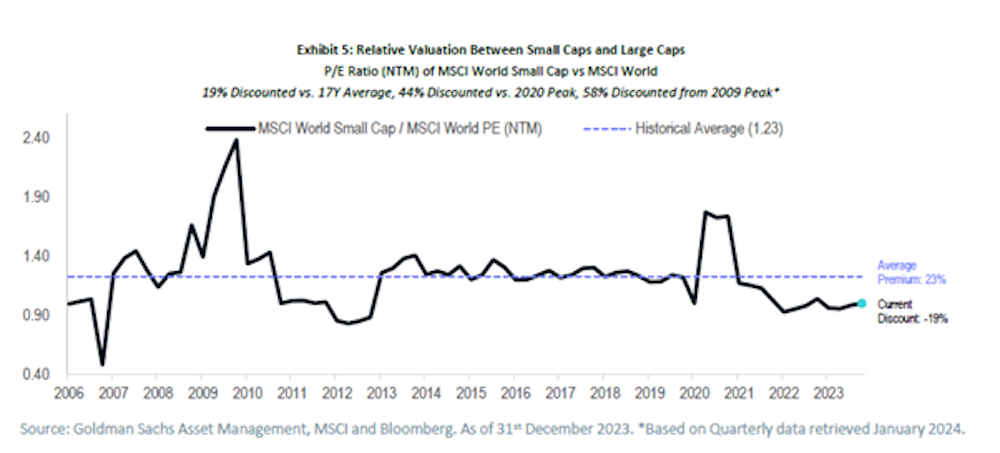Small caps, big opportunities



There are compelling tailwinds driving global small-cap stocks at the moment, which present an opportunity for Australian investors. However, many portfolios may not be allocated to these industry leaders of tomorrow. With a vast universe to tap for outsized returns, a systematic approach can help harness these opportunities.
Currently, Australian investors tend to focus on large and medium-cap companies in their portfolios, gaining exposure to Australian small caps either through managed funds or direct stock investments.
However, for international equities, most Australian managers use the MSCI ACWI ex Australia Index, which excludes the bottom 15 per cent of the investable universe. As a result, they miss out on exposure to global small caps.
This lack of exposure means they’re missing out on the potential of small-cap stocks in the global market to deliver potential outsized returns.
These future leaders of tomorrow are in the growth phase of their businesses. Given their size and ambition to expand, they are often more nimble and innovate quickly to adapt to challenges.
The case for investing in small caps is particularly strong today. As inflation cools across the world, central banks are likely to cut rates later in the year. During this recovery stage of the economic cycle, smaller companies have historically performed better compared to their larger peers.
The challenge lies in finding this alpha. The global small-cap universe is vast and complex, with individual volatility and a large amount of data to consider.
For example, the MSCI World Small Cap Index covers 4,130 stocks across 23 developed markets¹. The index covers approximately 14 per cent of the investable market in each country.
The sector holdings are diverse, with the largest holdings being Industrials at 20.5 per cent, Financials at 15 per cent, Consumer Discretionary at 13.1 per cent, Information Technology at 11 per cent, and Health Care at 9.5 per cent. Geographically, the largest representations are from the US at 60.3 per cent, Japan at 12.3 per cent, the UK at 5.3 per cent and Canada at 3.8 per cent¹.
So how can investors understand and harness the opportunity in global small caps?
Small caps’ time to shine
When it comes to small caps, there may be volatility across individual stocks, but the asset class as a whole can be a good allocation for investors.
Firstly, as mentioned, small caps have historically performed well compared to large caps during the recovery stages of the economic cycle (refer to chart). With inflation cooling in economies across the world and the possibility of rate cuts towards the latter part of the year, we could be entering an environment favourable to small caps.

(source: MSCI https://www.msci.com/www/blog-posts/small-caps-have-been-a-big/03951176075)
Not only this, but small-cap valuations are at historic lows due to rate rises, macroeconomic conditions and economic growth concerns pushing small-cap valuations down to their lowest quartile since 2006. As of 31 December 2023, the MSCI World Small Cap Index represented a 19 per cent discount from the historical average and a 44 per cent discount from the peak in 2020 (refer to chart).

This not only means potential returns in comparison to valuations are high, but there is a good buffer against any potential downsides.
While debt-to-service ratios are often a concern during high-interest rate periods, the shorter refinancing cycles and higher proportions of floating-rate debt of small caps relative to large caps may act as a tailwind to performance during the converse interest-rate outlook.
All in all, it’s an opportune moment for investors to consider allocating to global small caps.
A systematic approach
When investing in small caps, it is important to realise the size and breadth of the universe, which brings a high degree of complexity, and informational inefficiencies within the investing space.
Therefore, a systematic approach to small-cap investing is crucial.
For example, the Yarra Global Small Companies Fund, managed by Goldman Sachs Asset Management, employs a quantitative method utilising artificial intelligence, big data and machine learning, which the team finds very helpful for navigating the more than 7,500 opportunities in our small-cap universe.
Using the MSCI World Small Cap Index as a benchmark, we start with fundamental, bottom-up research to identify high-quality business models, examine the financial positioning, management quality and industry outlook of companies across different sectors to uncover sources of alpha.
Importantly, we also leverage proprietary alternative data sources to identify differentiated themes and trends affecting companies, which other investors may not see.
Our analysis helps us to identify fundamentally undervalued companies, as we believe buying high-quality businesses at a fair price leads to strong long-term performance.
And finally, we also leverage global market insight, recognising that other market participants can provide valuable information to supplement our own analysis.
Given the complexity of the small-cap universe and the risk profile of a subset of small-cap companies, it is important to select a skilful manager who can adequately analyse and capture the opportunities in this space while properly managing the risks.
Once you do, small caps can be a great way to diversify your portfolio beyond the typical larger players.
Footnote
1. MSCI.com
The Yarra Global Small Companies Fund aims to deliver superior returns by investing in a diverse and balanced portfolio of small companies with big futures. Launched in November 1999 and managed by Goldman Sachs Asset Management since 2016, our experienced team uses alternative data and AI to gain insights that optimise diversification and growth potential over the medium to long term. The Yarra Global Small Companies Fund delivered a total one-year return of 16.50 per cent as of 30 April 2024, and has consistently outperformed the MSCI World Small Cap Index over one, three, five and 10 years, and since its inception.

Yarra Capital Management is a leading independent, active Australian fund manager with a strong local market heritage. ...
Recommended for you
One of the most significant surprises of 2024 was the plan announced by the Australian Prudential Regulation Authority’s (APRA) to phase out AT1 hybrids issued by banks. This change raises a number of questions, the most pressing of which is what will happen to AT1 hybrids in 2025 and 2026? Fixed income investors would be wise to start planning how best to navigate the road ahead.
The recent US election has had strong reverberations across equity markets internationally and in Australia. Here, Tynda...
The growing use of drones is transforming warfare
Innovation isn’t just a buzzword; it’s the lifeblood of growth, competitiveness, and sustainability across industries.


















